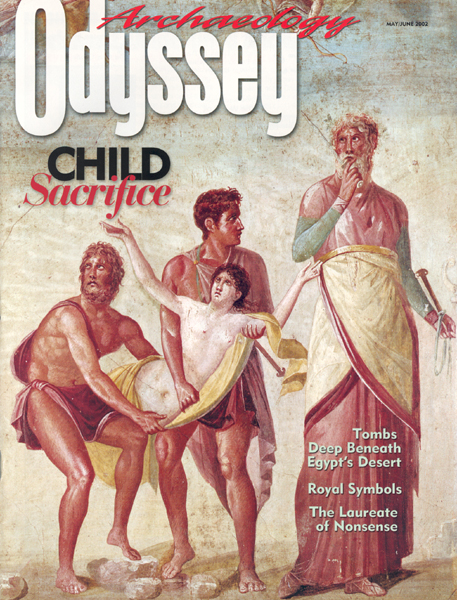Archaeology Odyssey, May/June 2002

Features
Intact tombs from ancient Egypt are extremely rare, so high are the rewards of grave-robbing. Even the most famous tomb of all—that of King Tutankhamun (1336–1327 B.C.), opened by the British archaeologist Howard Carter in 1922—was robbed in antiquity. The last intact tomb was excavated in 1941 by Egyptian archaeologist Zaky Y. Saad. […]
During the Late Bronze Age (1550–1200 B.C.E.), much of the eastern Mediterranean and Near East was carved up among a group of civilizations: Egyptians in the south, Babylonians and Assyrians in Mesopotamia, the Mittani in northern Syria, Hittites in Anatolia, and Mycenaeans in Greece and Crete. Many of these states had active diplomatic relations […]
Mount Vesuvius sleeps quietly today, overlooking the brilliant blue waters of the Bay of Naples. Yet over the millennia its eruptions have again and again destroyed (and sometimes preserved) towns lying near its slopes—including the prosperous ancient cities of Pompeii and Herculaneum.
Iphigenia and Isaac, an unlikely pair. Yet both were almost sacrificed—one to a Greek goddess and the other to the universal Israelite God. Both Iphigenia and Isaac were innocent of any wrongdoing. In the end, both were saved when the deity relented and an animal 052sacrifice was substituted for the human sacrifice. Of course, […]
